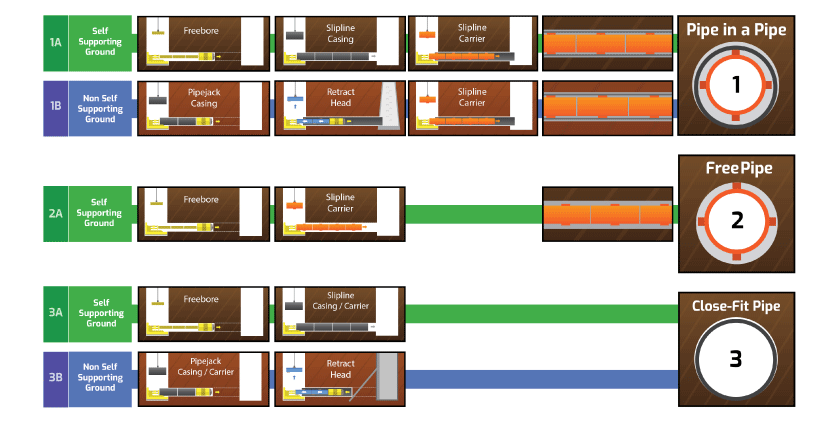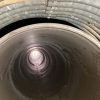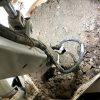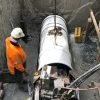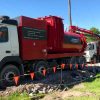PROJECT OVERVIEW.


The Project
For the 1050mm diameter Pezzimenti Tunnelbore has developed an auger extraction system which is used to transport the material from the face back to the shaft. Augers use less water than vacuum extraction which is used for smaller diameters. At Willow Tree no water was added to the process during minitunnelling.
Boulders Encountered
When the shaft was excavated hard igneous boulders were found. These boulders slowed progress considerably during minitunnelling. At the 12m mark a major intervention was required when the steering mechanism of the head was damaged by the boulders. The head was fully retracted from the steel casing, repaired on site and then re-installed inside the steel casing.
Retractable Head
It was not possible to construct an exit shaft at the time of microtunnelling so once the 29m mark was reached, the microtunnelling head was withdrawn back through the steel casing into the launch shaft and demobilised. The butt jointed RC JP was then sliplined into the steel casing. The client undertook grouting of the annulus between the steel casing and the concrete pipe. All up the works took 10 working days.
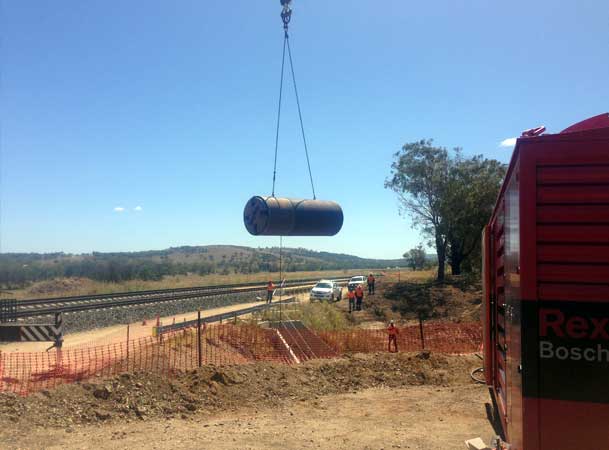
Craning the 1255 diameter retractable microtunneling head into position close to the heavy gauge coal rail line.

Pezzimenti Tunnelbore Operators utilise some shade during mirotunneling
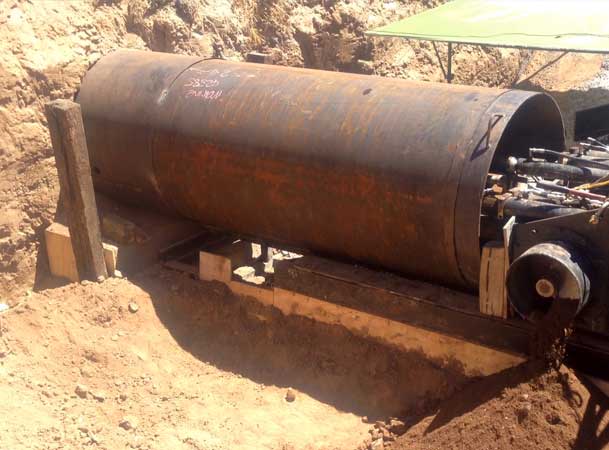
The Retractable Microtunneling Head ready for launch.
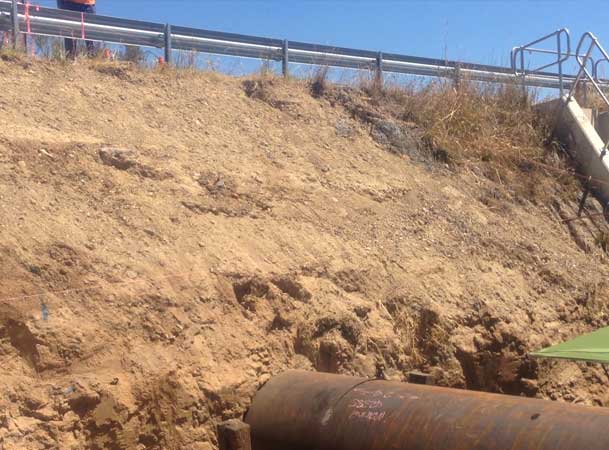
The Retractable Microtunneling Head in position for tunneling beneath the heavy-gauge coal railway tracks.
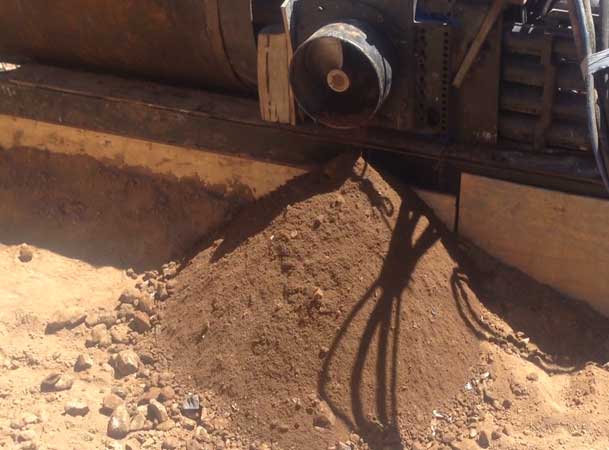
Dry Spoil bought back by the auger extraction system. No water was required during tunneling.




